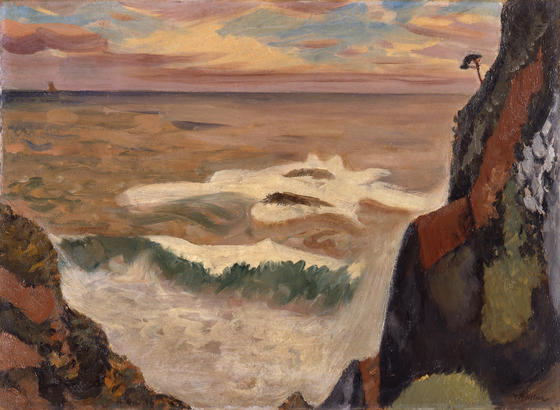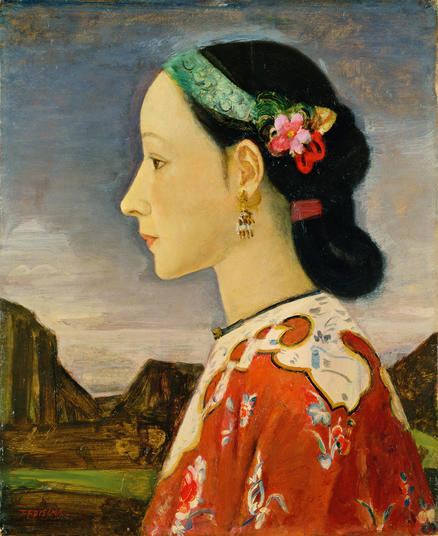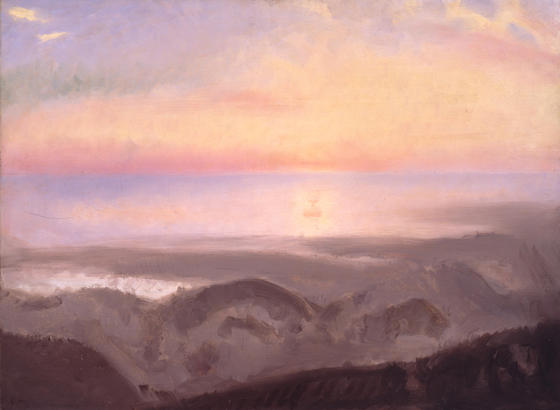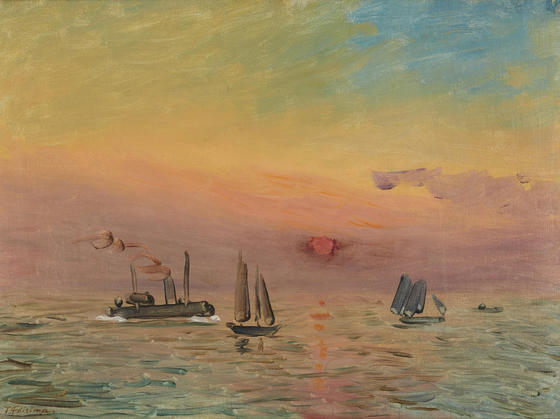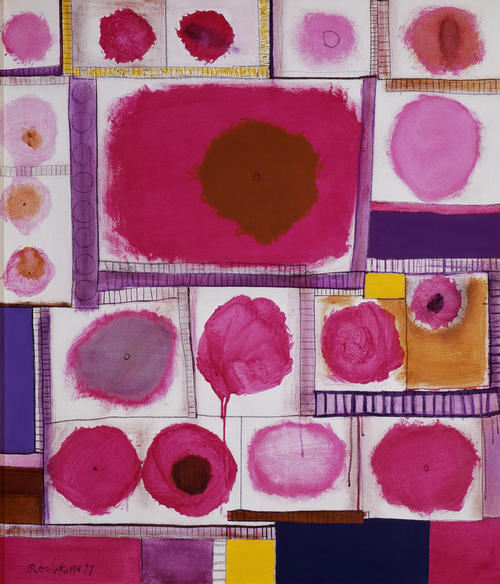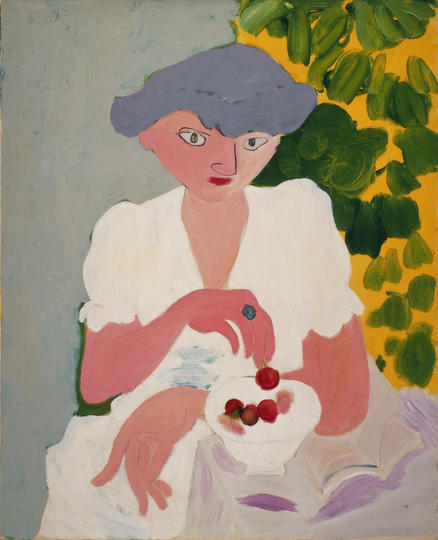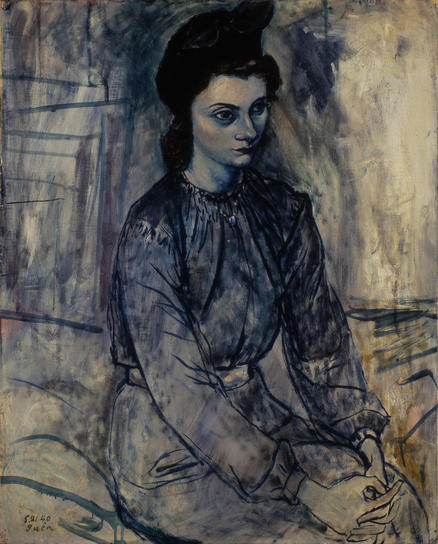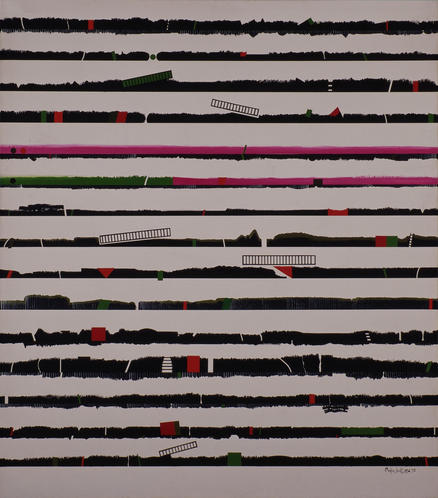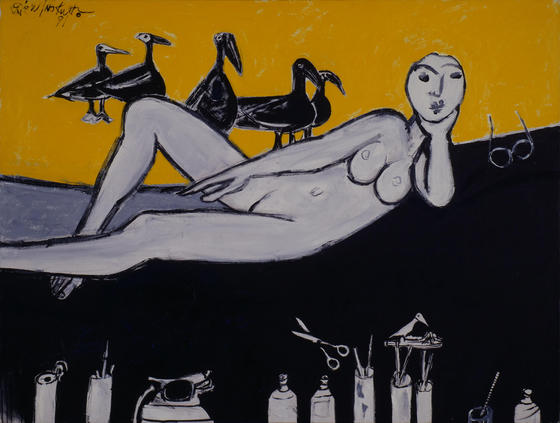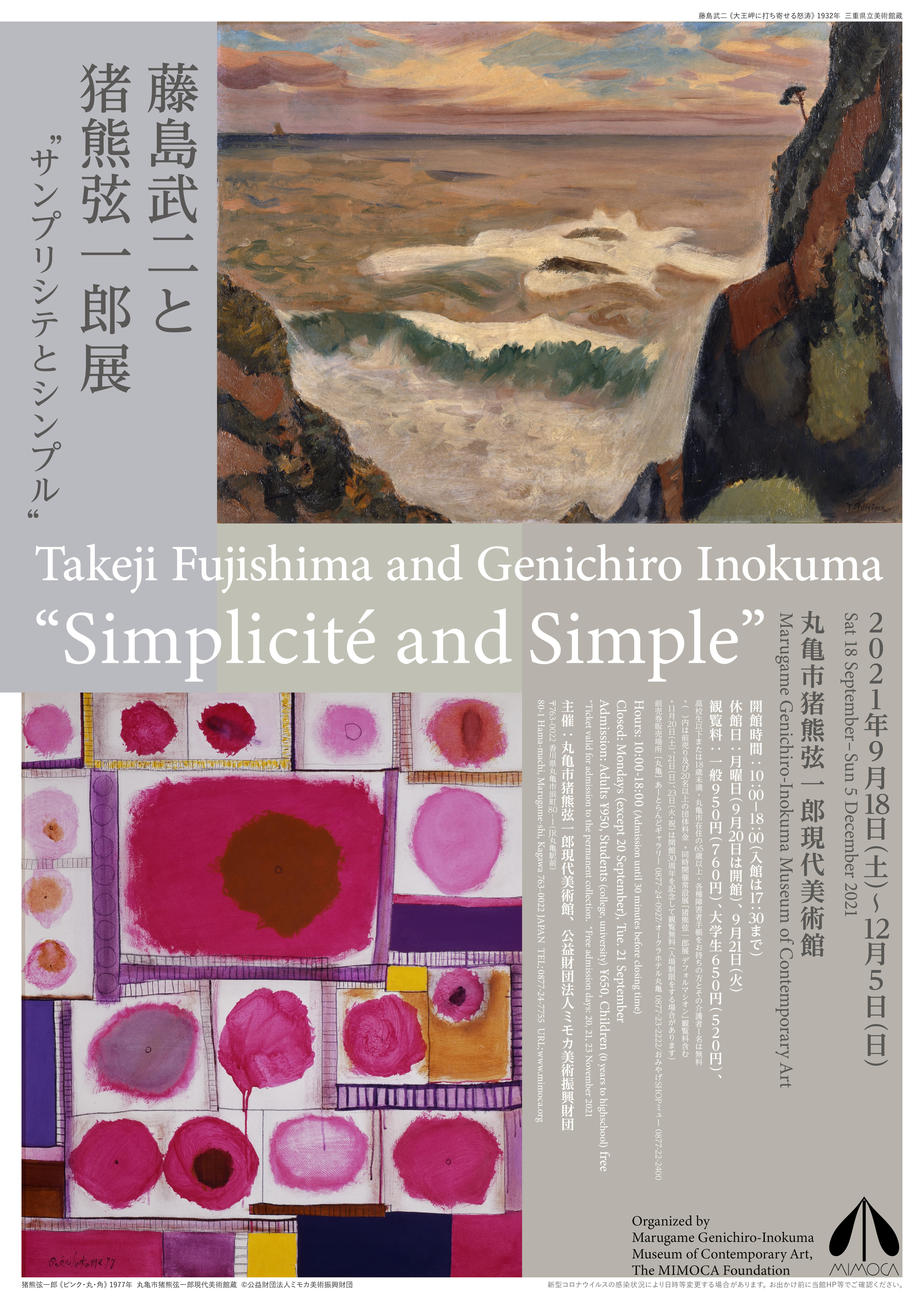
1. Takeji Fujishima, Breaking Waves at Daio(-) Misaki, 1932, Collection of MIE Prefectural Art Museum
2. Takeji Fujishima, Profile of a Woman, 1926-27, Collection of Pola Museum of Art
3. Takeji Fujishima, Sunrise of TOBA, 1931, Collection of Kagoshima City Museum of Art
4. Takeji Fujishima, Sunrise at a Harbor, 1934, Collection of The National Museum of Modern Art, Tokyo
5. Genichiro Inokuma, Pink Circle Square, 1977
6. Genichiro Inokuma, Cherries, 1939
7. Genichiro Inokuma, Mademoiselle M, 1940
8. Genichiro Inokuma, Landscape GT, 1972
9. Genichiro Inokuma, Reclining Nude and Birds, 1991
5-9: Collection of Marugame Genichiro-Inokuma Museum of Contemporary Art, ©︎The MIMOCA Foundation
Takeji Fujishima and Genichiro Inokuma Simplicité and Simple Takeji Fujishima and Genichiro Inokuma Simplicité and Simple
Date: Sat. 18 September 2021 - Sun. 5 December 2021
Temporarily closed: Sat. 18 September - Thu. 30 September
Hours: 10:00 - 18:00 (Admission until 30 minutes before closing time)
Closed: Mondays (except 20 September), Tue 21 September
Organized by Marugame Genichiro-Inokuma Museum of Contemporary Art, The MIMOCA
Admission: Adults ¥950, Students (college, university) ¥650, Children (0 years to highschool) free
*Ticket valid for admission to the permanent collection.
*Free admission days: 20, 21, 23 November 2021
Takeji Fujishima (1867-1943) was a noted Yoga (Western-style) painter, active from the late 19th to mid-20th century in the Hakuba-kai (White Horse Society) and Bunten and Teiten exhibitions of the Japanese Art Academy. Fujishima is known for richly decorative images of women that fuse East and West, and for concise compositions painted in pursuit of the ideal sunrise in his later years. Alongside his career as a painter, he in 1896 became an associate professor at the Tokyo Fine Arts School’s Western Painting Department, where he taught many young artists. Under his training, Genichiro Inokuma (1902-1993) embarked on a career as a painter.
Genichiro Inokuma painted continually while moving his home base, studying in Paris for about 3 years in his 30s, residing in New York for some 20 years after turning 50, and subsequently producing work in Hawaii and Tokyo. In that time, he shifted from figurative painting to abstract and eventually, in his late period, created works transcending the boundaries of figurative and abstract.
Though their paintings differ in style, both Fujishima and Inokuma placed emphasis on simplification, the former calling it “simplicité” and the latter, “simple.” When painting, they constantly thought about how to express a complex idea concisely—what to remove and what to leave, and how to unify what remained, in order to capture the essence of their subject.
By featuring works from throughout the two artists’ careers, this exhibition enables viewers to follow their development of techniques of “simplification.”
1. Takeji Fujishima, Breaking Waves at Daio(-) Misaki, 1932, Collection of MIE Prefectural Art Museum
2. Takeji Fujishima, Profile of a Woman, 1926-27, Collection of Pola Museum of Art
3. Takeji Fujishima, Sunrise of TOBA, 1931, Collection of Kagoshima City Museum of Art
4. Takeji Fujishima, Sunrise at a Harbor, 1934, Collection of The National Museum of Modern Art, Tokyo
5. Genichiro Inokuma, Pink Circle Square, 1977
6. Genichiro Inokuma, Cherries, 1939
7. Genichiro Inokuma, Mademoiselle M, 1940
8. Genichiro Inokuma, Landscape GT, 1972
9. Genichiro Inokuma, Reclining Nude and Birds, 1991
5-9: Collection of Marugame Genichiro-Inokuma Museum of Contemporary Art, ©︎The MIMOCA Foundation
